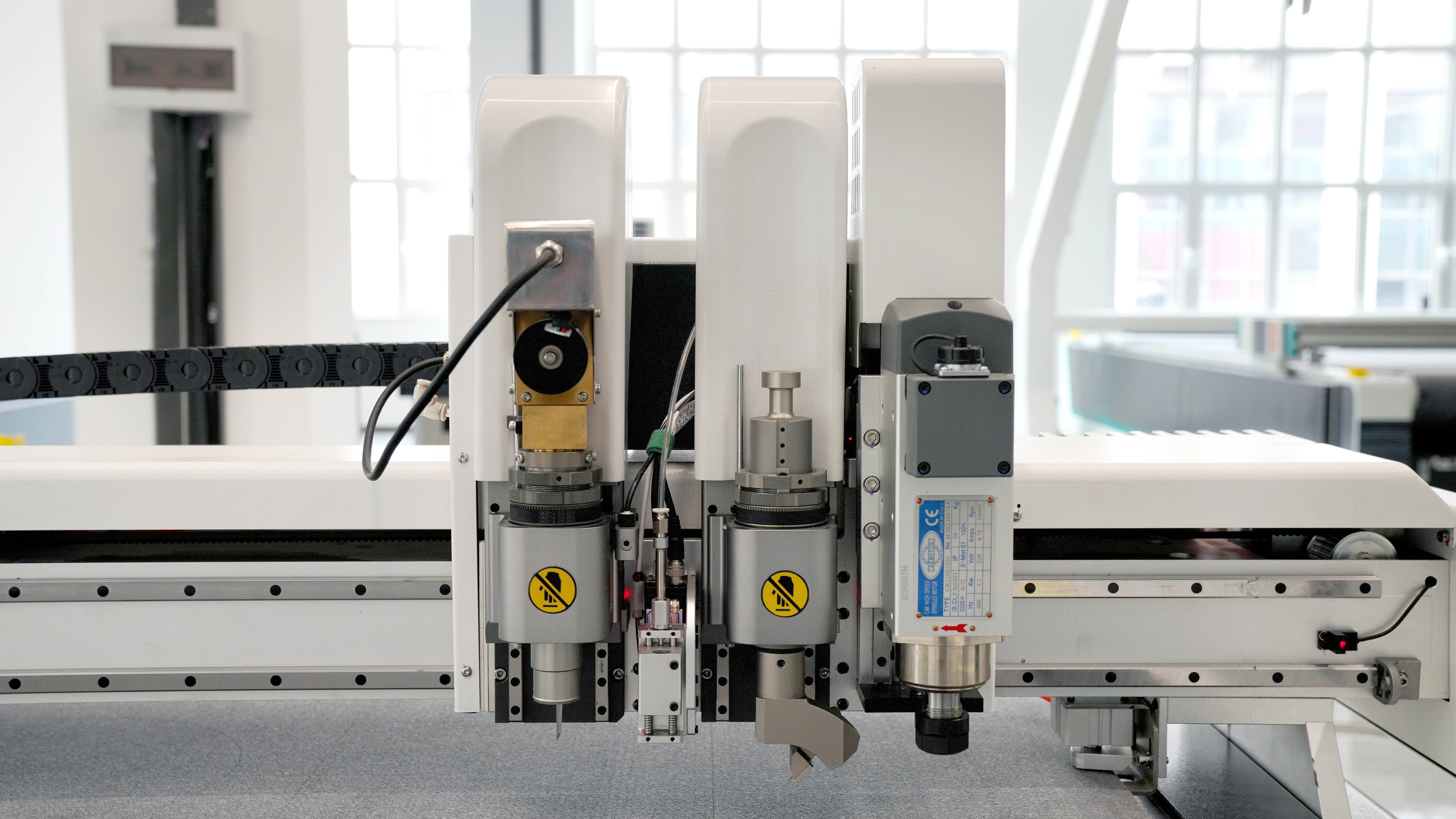Oscillating blades are the powerhouse of CNC gasket cutters. Instead of spinning or dragging, they vibrate at high speeds (thousands of micromotions per minute) to cut through material cleanly - without burning, melting or causing any accidents.
Most oscillating blades for gasket cutting are made of tungsten steel. Why? Because tungsten steel has the following properties:
High hardness: remains sharp even after long use.
Abrasion resistance: ideal for cutting hard materials such as graphite and non-asbestos gaskets.
Durability: you don't need to replace them every other day.
Why many gasket manufacturers prefer oscillating blades:
Cold cutting = no smoke, no burnt edges
Ideal for heat-sensitive materials such as rubber or PTFE
Extremely precise even with complex shapes
No molds required = quick design changeover

What types of gasket cutting blades are there?
Straight Blade: For general purpose gasket cutting, great for cutting clean straight lines on materials like rubber, non-asbestos.
Hook Blade: Good for pulling fibers or tough materials like fiberglass or felt.
Round Blade: Best for flexible roll materials like fabric, leather or filtration.
Half-Cut Blade: Designed for half-cutting layered materials like 3M Adhesive Gaskets, without cutting the backing for perfect depth control.
V-Cut Blade: Typically trapezoidal in shape, used for bevel cuts and slotting on foam and acoustic panels. It is capable of precise slotting at a variety of angles (e.g. 15°, 22.5°, 45°), perfect for applications like acoustic decorative wall panels or phenolic foam ducting.
Each blade has its superpowers - choosing the right one can mean the difference between failure and a perfect result.

What gasket materials can be cut with an oscillating blade?
Rubber (NR, NBR, EPDM, etc.), silicone sheets, asbestos-free gaskets, graphite reinforced gaskets, polytetrafluoroethylene/Teflon, glass fiber paper, ceramic fiber paper and other materials
For other gasket materials (such as composite sheets, soft metals, or multi-layer gaskets), you can refer to the material's hardness, density, and thickness as a benchmark for selecting the appropriate blade. When in doubt, it is always wise to perform a test cut to determine the best results without wasting production material.
Remember: the slightest change in blade replacement can significantly improve your cutting efficiency and product finish. Choose carefully!
To perfectly cut gaskets, it is not only important to choose the right machine or blade, but also to know how to use them. Here are some practical tips that can help you save time, money and a lot of trouble:
1. Install the Blade Correctly (This is Critical)
This is the number one mistake we see from new users (and even some experienced users).
When installing the blade into the tool holder, make sure that:
The tip of the blade is centered in the tool and not off to one side.
If the blade is off center, it will vibrate unevenly, resulting in poor cut quality or even breakage.
When the w-axis (the axis of rotation of the cutting tool) is set to 0 → the cutting edge of the blade should be facing in the x+ direction (towards the back of the machine) → This ensures that the blade enters the material at the correct angle and direction.
Why is this important?Incorrectly installing the blade can lead to:
Premature blade damage
Material waste from rough or inaccurate cuts
Severe cutting errors, especially in delicate or complex shapes
So take your time during the setup process - get this part right and the rest will be much easier.
2. Use the right blade length
The blade should be at least 5mm longer than the actual thickness of the material being cut. When the blade is too short, the cut may not be clean, and a blade that is too long will cause unnecessary vibration and potential blade bending.
3. Replace the blade in time
When you find that the blade edge is rough, dragging or overheating, please replace the blade. A sharp blade can save your machine, materials and patience.
4. Always test before production
Before production, you need to check the cutting depth, blade edge quality, blade vibration, blade wear, and conduct small tests to reduce losses.
5. Keep the blade area clean
After each operation, blow the blade area clean with an air gun to remove dust or debris. This prevents dirt from affecting cutting performance or damaging the blade seat.
Taking the time to properly install, inspect and maintain your blades will benefit every gasket you produce-clean edges, stable quality, and no wasted blades.

Whether you're working with rubber, graphite or tricky non-asbestos materials, there's a blade tool combination that makes your job easier, faster and more precise.
Need help choosing the best blade for your gasket production? Click here to contact us for assistance! After all, quality cutting starts with the right choice.






 No.5789, Yushan Road, Jinan City, Shandong Province, China
No.5789, Yushan Road, Jinan City, Shandong Province, China +86 18560162709
+86 18560162709 250109
250109








